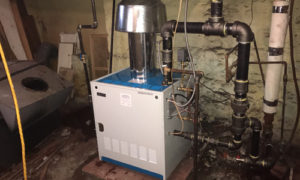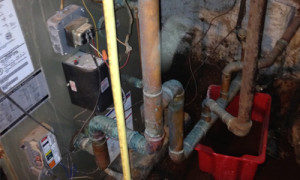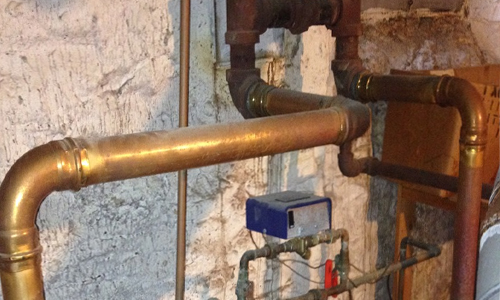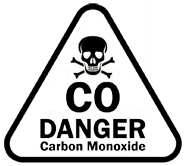Copper Pipe Installed On Steam Boilers Is Crazy! Do you have steam heat? Has your steam boiler been recently replaced or repaired, was copper piping installed? There is an ongoing battle over what kind of pipe to install, some heating contractors use steel pipe, and others install the copper pipe. Industry standards specify the use of threaded steel pipe with cast-iron fittings for steam heating, no ifs, ands, or buts. Find out what copper pipe can do to your steam boiler and why steel pipe is the right choice for steam heating.
Expansion…
Using copper piping on steam boiler supply pipes would be a lot less labor involved, but it causes big problems. Copper pipe expands more than steel pipe. The high-temperature change in a steam system will cause copper pipe and fittings to soften and become weak. This will eventually lead to the following:
- boiler failure
- pipe & fitting failure
- no heat


Not just expansion
This is the second problem that copper piping will cause for a steam boiler. Copper pipe, steel and cast iron fittings are dissimilar metals. The connections where these metals meet will corrode unless dielectric unions are installed. The debris created from corrosion inside the boiler and pipe will work their way into the steam piping system causing blockages and controls to fail.
Steam return lines

Aside from the supply lines, there is one spot for copper piping on a steam heating system, and that’s the wet return lines. The reason being is the condensate water does not cause a lot of expansion and contraction because it’s cooled down. A copper wet return line will need a dielectric union, so no corrosion occurs in the steam system.
What do I do?
If you have steam heating and you’re not sure that the pipe & fitting connections are joined together properly, a simple inspection will give you peace of mind. Click to schedule a steam boiler inspection.


